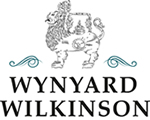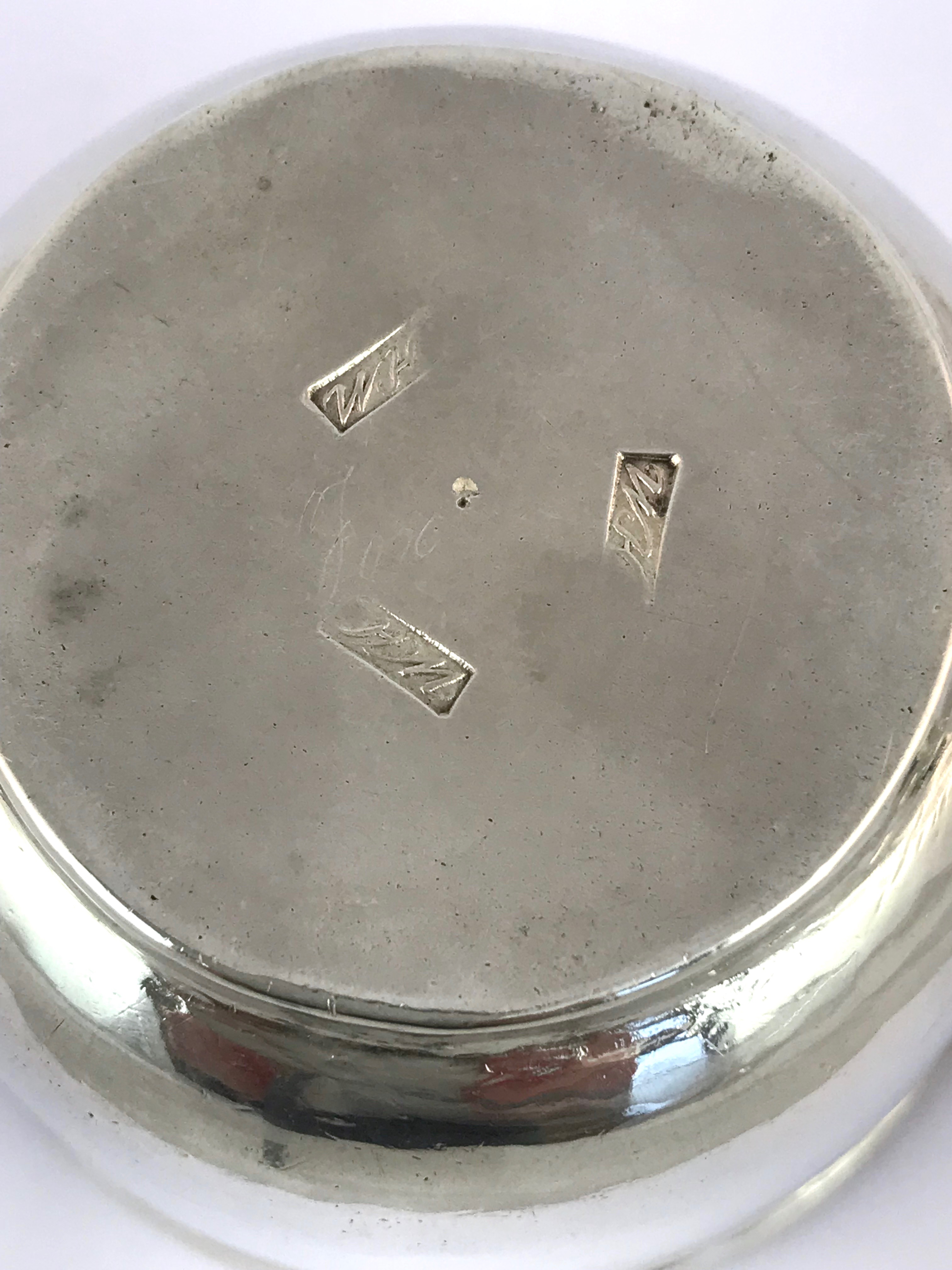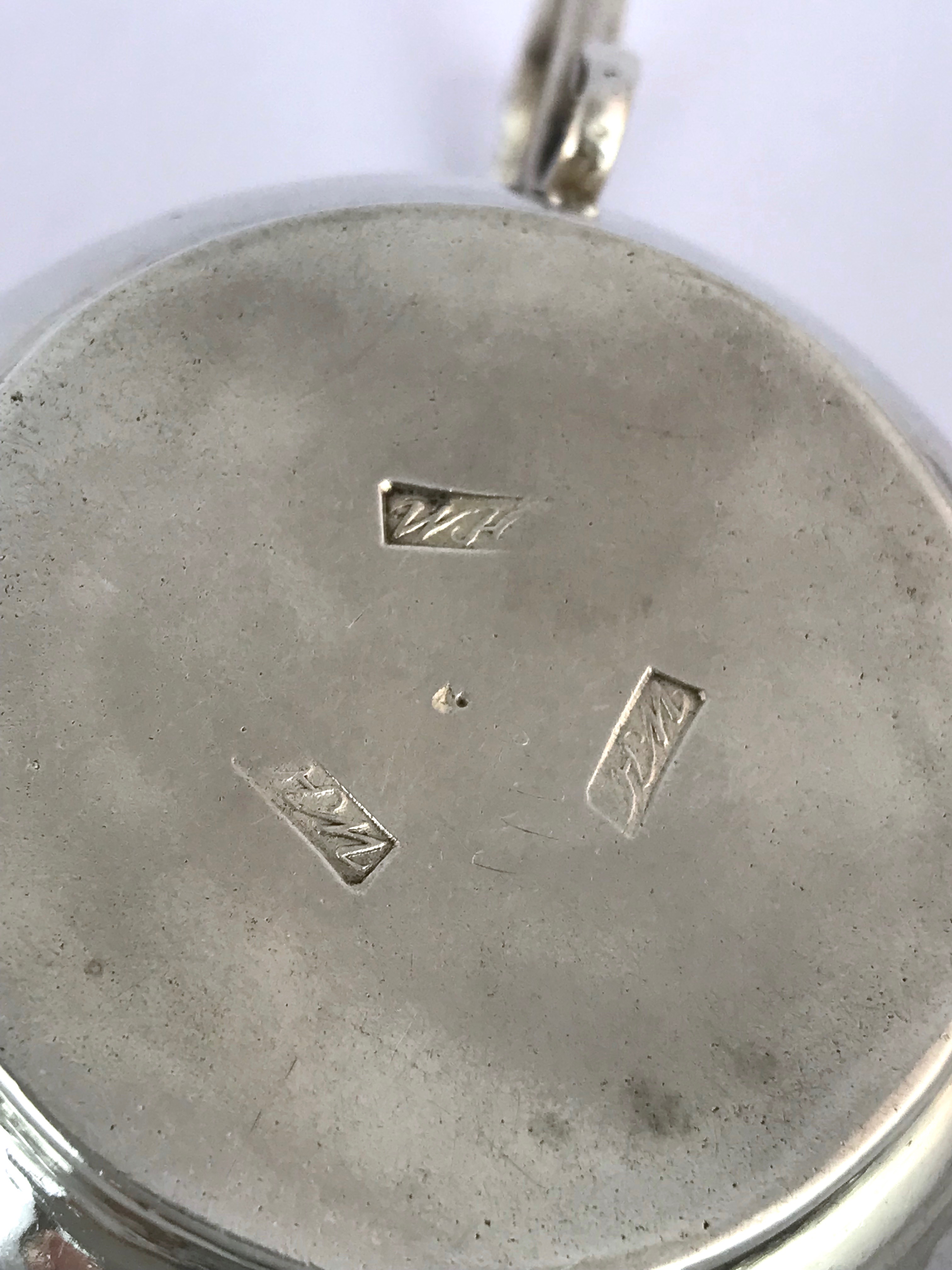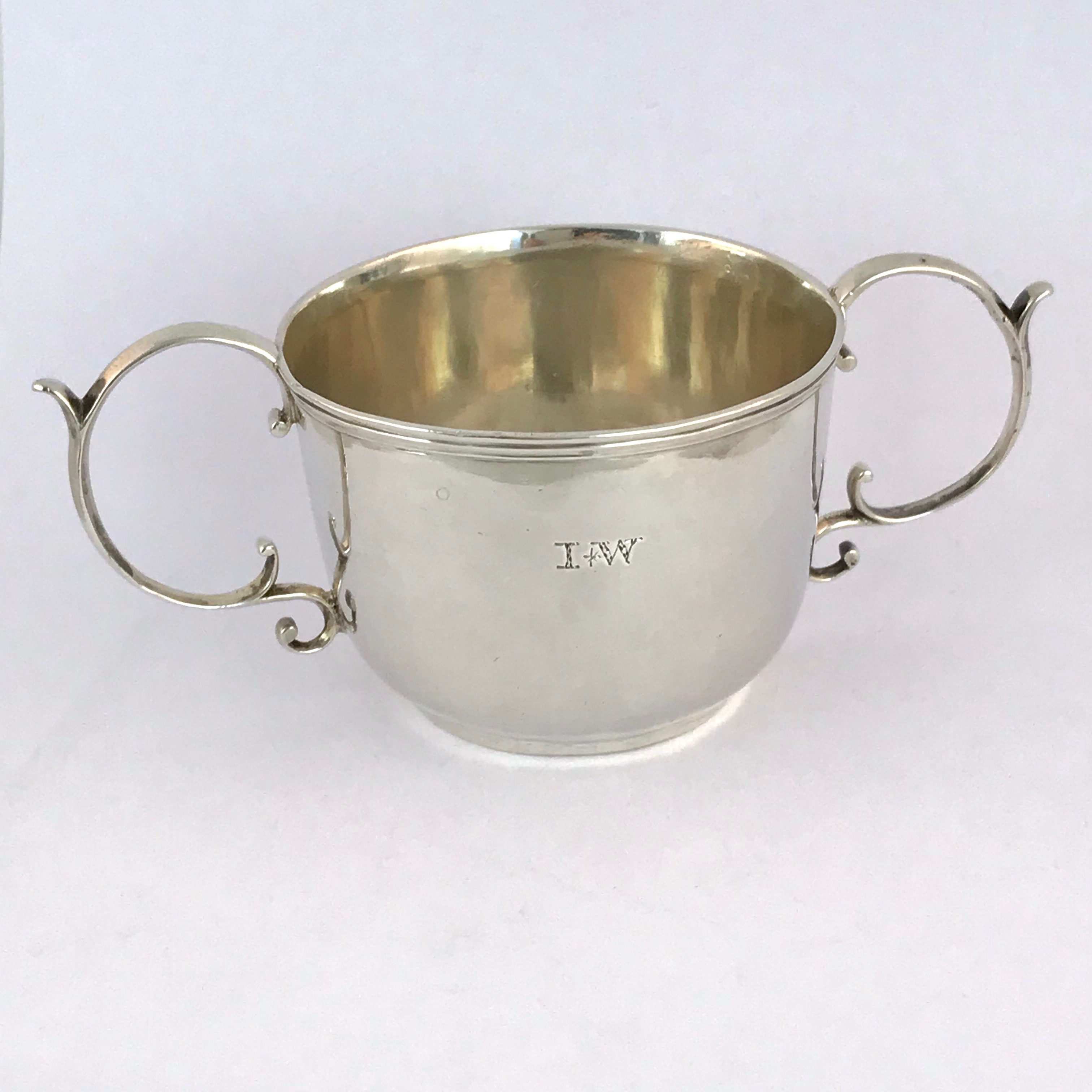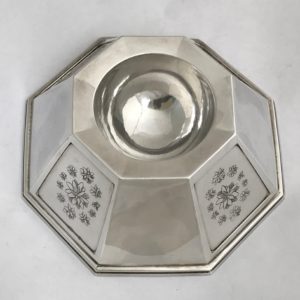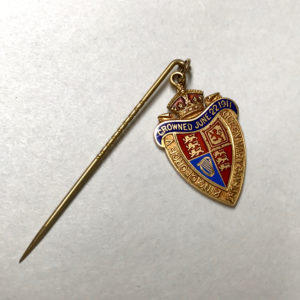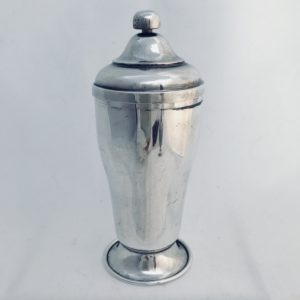Description
A small, but heavy gauge, circular two-handled silver porringer with a reeded lip. The handles are formed as a C-scroll with a small, lower, curved extension. Initials I * W are engraved on one side and what appears to be the name L Fox is faintly inscribed on the base between two makers’ marks.
Maker’s Marks
The maker’s mark, of ‘WH’ in script in a rectangular punch, for William Hardwick (the Elder), is struck three times on the base in a triangular arrangement.
Dimensions & Weights
Width (handle to handle): 12.7 cm / 5 ins
Height (to top of handle): 5.4 cm / 2 1/8 ins
Diameter of body: 6.7 cm / 2 5/8 ins
Weight: 107 gm / 3.4 ozT
William Hardwick
There are two silversmiths in Manchester in the mid-eighteenth century with the name of ‘William Hardwick’; they are father and son.
The first firm mention found is a receipt of ‘William Hardwick’ dated 3 Oct 1757 (Manchester Cathedral Archives; Mancath 2/A/5/20).
In the records of 4 apprentices engaged over the years 1758–1774, the first 2 and the last are to ‘William Hardwick’ whereas the third in 1768 is to ‘Messrs William Hardwicks, Jewellers and Goldsmiths’. This is the earliest reference found to father and son working together. The Manchester Directory for 1772 (1771) lists ‘William Hardwick & Son of St Mary’s Gate – Silversmiths’. The Manchester Rate Books for various taxes list ‘William Hardwick’ at St Mary’s Gate from at least 1765.
The 1773 Parliamentary Report lists ‘William Hardwick’ as having a mark registered in Chester; he is the only Manchester goldsmith listed.
William Hardwick the Elder’s death and administration are registered as ‘William Hardwick of Manchester, Goldsmith’ in 1774, with his son William inheriting as next of kin.
William Hardwick the Younger dies in 1777 and the business appears to be continued by his widow Ann who is still sending silver to Chester to be assayed in his name as late as 1779/80. Ann Hardwick is listed as trading in silver plate and china in the Manchester Directory of 1781.
Ann (née Richardson), wife of William Hardwick the Younger, is sister to John Richardson, a silversmith in London who was apprenticed in 1739 to the specialist salver and waiter maker Henry Morris. Ann and John Richardson’s father is James Richardson of Tilston, near Chester.
An example of William Hardwick’s maker’s mark, with the Chester date letter for 1779/80 is shown below:
